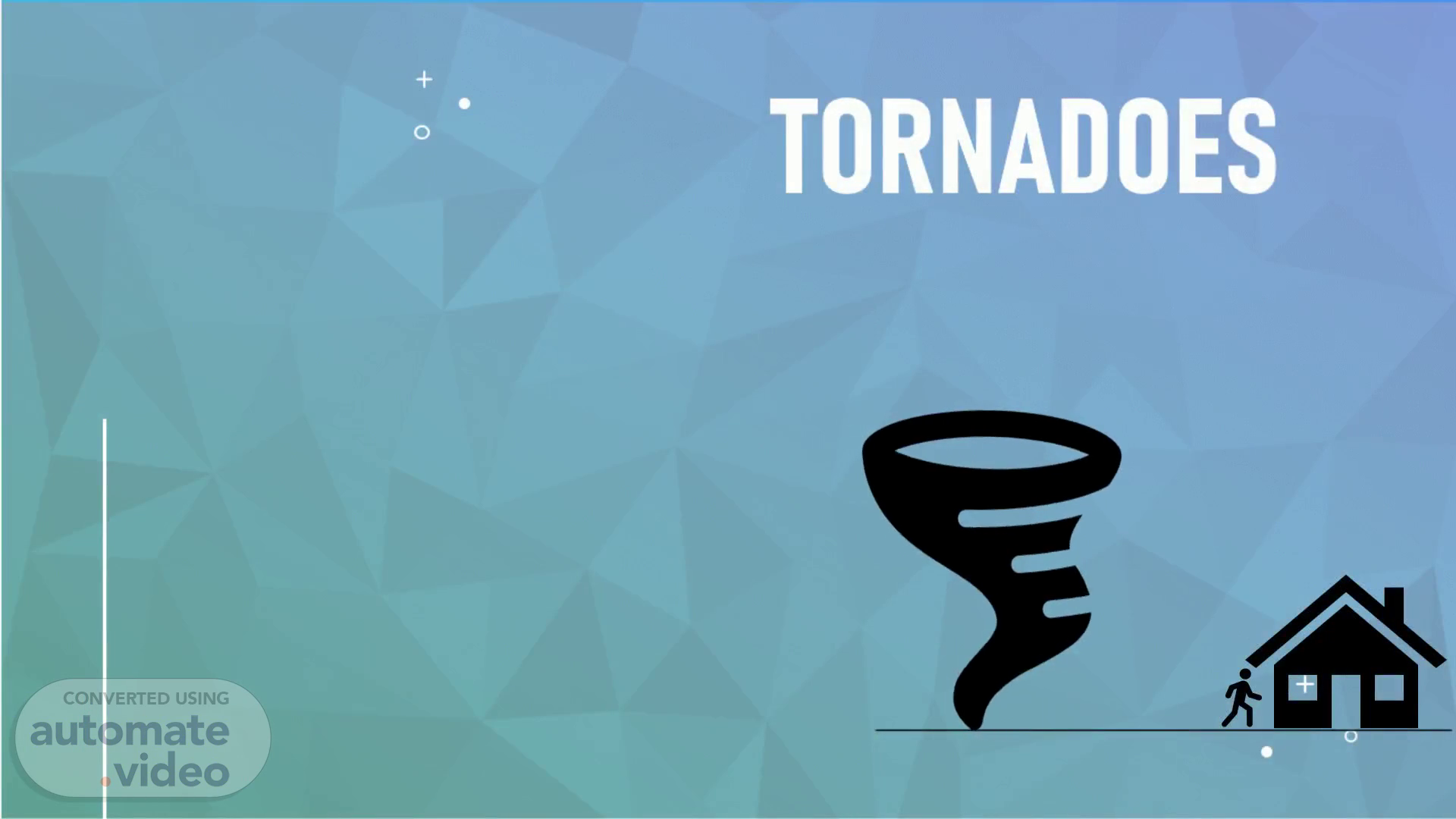Page 1 (0s)
[Audio] Tornadoes By us. Background pattern Description automatically generated.
Page 2 (13s)
[Audio] What atmospheric conditions cause a tornado? The key atmospheric ingredients that lead to tornado potential are instability - warm moist air near the ground, with cooler dry air aloft and wind shear - a change in wind speed and/or direction with height.
Page 3 (31s)
[Audio] How are they formed? Tornadoes form when warm, humid air collides with cold, dry air. The denser cold air is pushed over the warm air, usually producing thunderstorms. The warm air rises through the colder air, causing an updraft. The updraft will begin to rotate if winds vary sharply in speed or direction. What are the warning signs? The color of the sky may change to a dark greenish color. A strange quiet occurring within or shortly after a thunderstorm. A loud roar that sounds similar to a freight train. An approaching cloud of debris, especially at ground level. Debris falling from the sky..
Page 4 (1m 21s)
[Audio] How is it categorized? Tornadoes are categorized by the wind speed and the amount of damage they cause using a scale called the " Enhanced Fujita" scale. There are 5 Types of Tornadoes Rope Tornadoes- smallest and most common Cone Tornadoes-similar to rope tornadoes but are narrower Wedge tornadoes- are the largest and most destructive Multi-vortex and satellite tornadoes- when a storm produces 2 tornadoes Waterspouts and land spouts- both are rotating columns of air and both are connected to clouds. But a tornado is formed by upper winds rotating the storm and the funnel then coming to the ground..
Page 5 (2m 8s)
[Audio] What kind of damage is done? The most violent tornadoes are capable of tremendous destruction with wind speeds of up to 300 mph. They can destroy large buildings, uproot trees and hurl vehicles hundreds of yards. Damage paths can be in excess of one mile wide to 50 miles long..
Page 6 (2m 31s)
Short video clip of a tornado in actin!. A picture containing equipment, construction Description automatically generated.
Page 7 (2m 45s)
Interesting facts about tornadoes?. 1925's Tri-State tornado is considered the deadliest in United States history. The widest recorded tornado struck on May 31, 2013. The worst tornado outbreak on record happened on April 27, 2011. Tornadoes can last from mere minutes to several hours. Tornadoes have touched down on every continent except Antarctica. Powerful tornadoes do occur in the northeastern U.S. Severe tornadoes in the U.S. can occur in both Tornado and Dixie Alleys. Spring is the peak season for tornadoes. Most tornado activity occurs in the afternoon and evening. The US experiences the highest number of tornado occurrences on Earth..
Page 8 (3m 15s)
Sources:. A picture containing nature, smoke, spring Description automatically generated.
